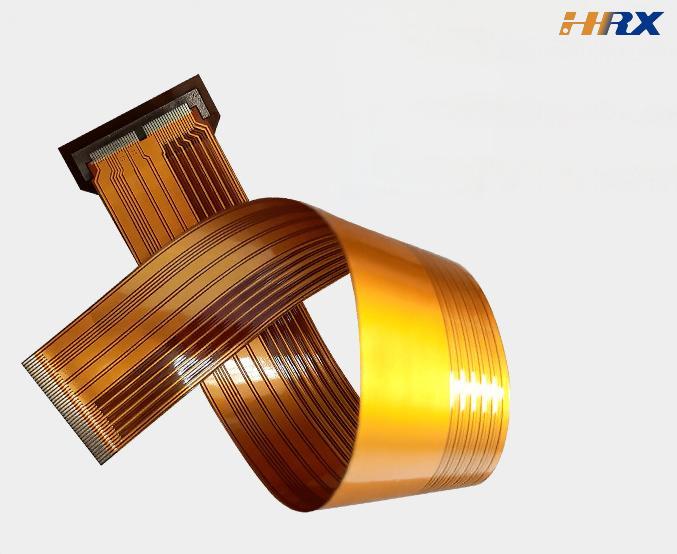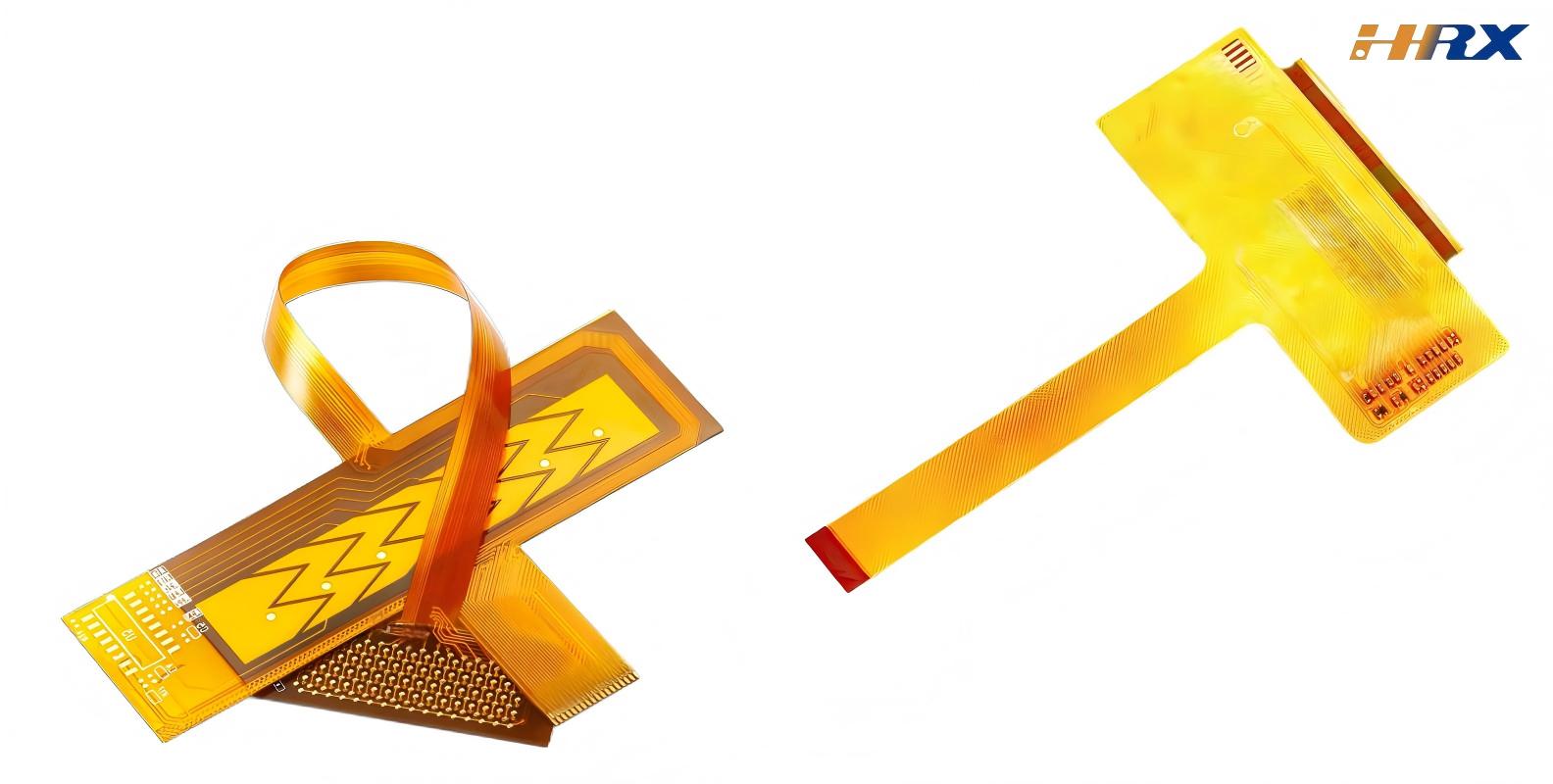Search
Key Considerations in FPC Flexible Circuit Board Design
- Apr 21,2025
-
Share
Flexible Printed Circuit Boards (FPCs) are pivotal in modern electronics, renowned for their flexibility, compactness, and adaptability to intricate geometries. As a leading manufacturer specializing in FPC, PCB, and Rigid - Flex Printed Boards, Shenzhen Huaruixin Electronics Co., Ltd. has in - depth knowledge of FPC design intricacies. This blog delves into the critical aspects of FPC design, highlighting our professional approach to ensure high - performance, reliable products that meet the diverse demands of various industries.

1. Material Selection: The Foundation of FPC Performance
Base Film: Selecting the right base film is paramount for FPC functionality. Polyimide, with its outstanding thermal stability (withstanding temperatures up to 260°C), high tensile strength (up to 200 MPa), and excellent chemical resistance, is a preferred choice. In automotive applications, where FPCs endure extreme temperatures, vibrations, and harsh chemicals, our high - grade polyimide - based FPCs ensure long - term reliability. Additionally, for applications requiring optical transparency, we offer clear polyimide films, enhancing the versatility of our FPC solutions.
Adhesives: The adhesive used in FPCs plays a crucial role in layer bonding and overall performance. Our FPCs incorporate high - performance adhesives with superior peel strength (meeting or exceeding IPC - 6013 standards) and low outgassing properties. In medical device FPCs, where biocompatibility and cleanliness are non - negotiable, we utilize adhesives compliant with ISO 10993 requirements, ensuring patient safety and regulatory compliance.
2. Layer Design: Optimizing Electrical and Mechanical Properties
Number of Layers: Determining the optimal number of layers is a critical design decision. Single - layer FPCs are ideal for simple applications, offering cost - effectiveness and reduced complexity. However, in advanced electronics such as high - end smartphones and aerospace systems, multi - layer FPCs (ranging from 2 to 16 layers) are essential for handling complex signal and power routing. Our design team employs state - of - the - art CAD tools and signal integrity analysis software to optimize layer configurations, ensuring minimal crosstalk and maximum performance.
Layer Stack - up: The layer stack - up, comprising dielectric and conductive layers, significantly impacts FPC electrical performance. We meticulously select materials with appropriate dielectric constants (Dk) and dissipation factors (Df) to minimize signal loss and impedance mismatch. In high - frequency applications (e.g., 5G, millimeter - wave), our optimized layer stack - up designs enable high - speed data transfer with minimal attenuation, making our FPCs suitable for next - generation communication devices.
3. Trace Routing: Ensuring Signal Integrity and Power Efficiency
Signal Integrity: Maintaining signal integrity is crucial for reliable FPC operation. Our design principles include minimizing trace bends, avoiding stubs, and routing differential pairs symmetrically to reduce electromagnetic interference (EMI). For high - speed serial interfaces (e.g., PCIe, USB 4.0), we implement controlled - impedance routing techniques to ensure signal quality over long distances. In aerospace and defense applications, where signal accuracy is mission - critical, our trace routing strategies guarantee robust data transmission in challenging electromagnetic environments.
Power Distribution: Efficient power distribution is essential to prevent voltage drops and power - related failures. We calculate power requirements based on load currents and voltage tolerances, designing power traces with sufficient width and copper thickness. To minimize power losses, we employ power plane stitching and decoupling capacitor placement techniques. In battery - powered devices, our optimized power distribution designs extend battery life by reducing power consumption and improving power delivery efficiency.
4. Flexibility and Bend Radius: Designing for Durability and Performance
Bend Radius Specification: The minimum bend radius is a key design parameter that determines FPC flexibility and lifespan. Our FPCs are designed with application - specific bend radii, ranging from 0.5 mm to 5 mm, depending on the required flexibility. In wearable devices, where FPCs are subjected to continuous bending and flexing, our designs ensure long - term reliability without compromising electrical performance. We also offer FPCs with enhanced bend capabilities, suitable for high - cycle - count applications such as robotic arms and automated machinery.
Flexibility Fatigue: Repeated flexing can cause material fatigue and trace breakage in FPCs. To address this, we conduct comprehensive fatigue testing using industry - standard methods (e.g., IPC - 6013 flex testing). Our FPCs are engineered to withstand millions of flex cycles, ensuring durability and reliability in demanding applications. By optimizing material properties, trace routing, and layer construction, we minimize the risk of fatigue failure and extend the service life of our FPCs.
5. Design for Manufacturability (DFM): Streamlining Production and Quality Control
Panelization: At Shenzhen Huaruixin Electronics, we optimize panelization to maximize production efficiency and reduce material waste. Our panel designs consider FPC size, shape, and production volume, enabling cost - effective manufacturing. By using advanced nesting algorithms, we can achieve up to 95% material utilization, significantly reducing production costs and lead times.
Test Point Placement: Strategic placement of test points is essential for comprehensive quality control during manufacturing. Our FPC designs incorporate easily accessible test points that allow for automated electrical testing, ensuring 100% functionality verification. We also implement in - circuit test (ICT) and flying probe test (FPT) strategies to detect and isolate manufacturing defects early, ensuring high - quality FPCs that meet or exceed customer expectations.
Conclusion
FPC design is a multidisciplinary process that requires expertise in materials science, electrical engineering, and manufacturing technology. At Shenzhen Huaruixin Electronics Co., Ltd., our commitment to innovation, quality, and customer satisfaction sets us apart as a trusted partner in FPC, PCB, and Rigid - Flex Printed Board solutions.
If you're seeking high - quality FPCs for your next project, visit our website at www.hrxfpc.com to explore our product offerings and capabilities. For inquiries or project discussions, contact us at sales@hrxfpc.com. We welcome industry professionals, both new and old, to engage in technical exchanges and collaborative learning, as we strive to push the boundaries of FPC technology together.

Let’s talk! We’ll provide the perfect solution for you!
-
 Huaruixin Electronics mainly produces printed circuit boards as the core business, to provide customers with one-stop solutions for FPC/PCB production, components sourcing and Assembly.
Huaruixin Electronics mainly produces printed circuit boards as the core business, to provide customers with one-stop solutions for FPC/PCB production, components sourcing and Assembly. - WHAT WE DO — PCB Design Solutions — Flex PCB Production — Components Sourcing — FPC&PCB Assembly
- PRODUCTS — Single Sided Flexible Circuits — Double Sided Flexible Circuits — Multilayer Flexible Cirucits — Rigid-Flex Circuits — FPC Assembly — PCB Assembly
- CAPABILITY — FPC Capability — Rigid-Flex Capability — PCB Capability — Assembly Capability
- Copyright © 2024 Shenzhen Huaruixin Electronics Co., Ltd. All Rights Reserved.
- Design By BONTOP


